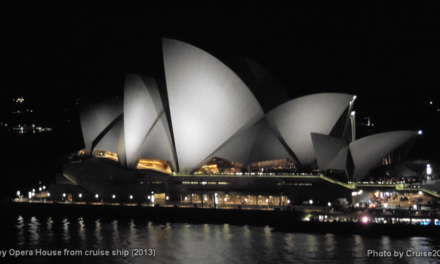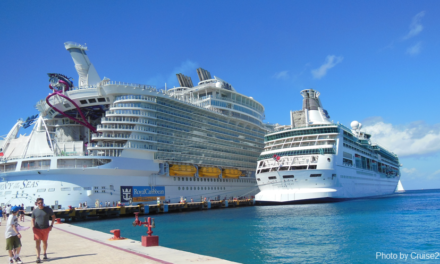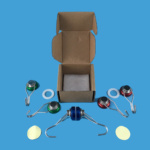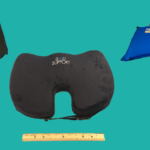Getting to and from your cruise ports can be expensive and stressful. In some cases, the air fare can be almost as expensive as your cruise, so it is definitely worth spending some time to find the right deal. Many cruisers only take cruises from US ports to avoid this hassle, but they are missing out on a lot of unique locations. For us, the fun of cruising is to see new destinations, which means we have to sail out of some interesting locations. The airlines do not make it easy for us to plan as the fares are continually changing and the flight times can change as you get closer to your departure. I have always enjoyed flying, but I know that is not the case for many travelers. So, in the hope of taking some of the stress out of the travel, I will share some of the tips I use for making my travel easier.

Here are three examples of what you can achieve with a little effort.
- We have a Danube river cruise coming up. In our experience, booking air for a river cruise with the cruise lines is pretty efficient, but I always check it out. In the end, our round trip flying into Budapest and out of Linz, ended up costing us $743 through the cruise line, Avalon. This was on Lufthansa, so we would also get mileage credit. The best fare I saw while monitoring other sources was $1,100, increasing to over $1,600 three months prior to the cruise. Since the rate through Avalon includes transfers and assistance if we get delayed, this was a no-brainer.
- We took a Princess cruise of the Greek islands that departed out of Venice. On this trip, while doing my research, I discovered that United was running a mileage special where we could fly Polaris class (business class with seats that fully recline) for only a few more miles that economy on the return leg. Princess was offering competitive rates on the flight to Venice. We ended up booking Princess to Venice for less than I could find on any site. This not only saved us money, but Princess provided support to ensure we made it to the ship. We booked our own flight back and enjoyed the luxury of an upgraded seat, which felt great after a long cruise.
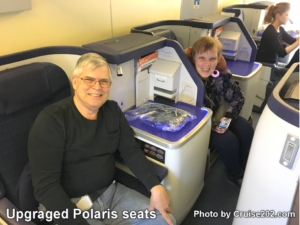 On a trip to Asia, we flew into Hong Kong and returned from Tokyo. Given the distance and time to fly, we decided to stay a few extra days at both locations. After some research, I found that we could knock off a bucket list item – traveling first class. By selecting our days carefully and picking flights with the newly configuration lay-flat pods, we ended up paying less than 25% more for our United Polaris class seats than economy. Since the flight to Hong Kong was over 16 hours, this was a luxury well worth the price.
On a trip to Asia, we flew into Hong Kong and returned from Tokyo. Given the distance and time to fly, we decided to stay a few extra days at both locations. After some research, I found that we could knock off a bucket list item – traveling first class. By selecting our days carefully and picking flights with the newly configuration lay-flat pods, we ended up paying less than 25% more for our United Polaris class seats than economy. Since the flight to Hong Kong was over 16 hours, this was a luxury well worth the price.
I can provide many examples, but suffice it to say that getting to and from your ship will take some time as well. There are bargains to be found. Unfortunately, this is something your agent can help you with, but cannot do for you. If you don’t like the travel planning, then I suggest that you book your travel through the cruise line since I have found their prices competitive and they protect you against the risk of missing your ship.
Flying Tip #1: Research air fare before booking the cruise
It is very easy to get excited about a cruise and plop down your deposit to lock it in. Before you make your final decision, go onto one of the air booking sites, such as Kayak, CheapTickets, PriceLine, Expedia, etc., to quickly check air fares. If you are booking more than nine months in advance, it may be difficult to find the air fare for your date. We book many or our cruises over a year in advance but airlines typically do not post their fares that far ahead. Instead, check flights for other dates on the same days of the week as you are traveling. Also, look around at other travel dates a few days before and after your travel dates to see if fares change based on the day of the week. If you plan to use miles, check whether mileage can be redeemed on your travel days. And, finally, ask your agent to check the cruise line prices, if they are available. I have changed more than one cruise when I found out I could save hundreds just by traveling on a different date. Of course, if you do not have the flexibility, you may be locked into your dates. My typical steps are:
- Determine what cruise dates are viable. If you have the flexibility and prices are comparable, consider more than one date. I generally look at air fares up to two days before the cruise and two days after the cruise. This also opens up options on the time of day you can travel, which can also greatly impact the cost of flying. We have found that flying early in the morning can be cheaper than an afternoon or evening flight which you would be required to take if you fly out the day of debarkation.
- Ask my agent (or the cruise line directly) what air fare they are offering. When booking early, it is sometimes possible to get great rates.
- Use Kayak (or a similar site) to determine what fares are available. This also gives me an indication of what flight times and airlines are available. I know there are sites that claim to offer predictive pricing, but I have not found these to be extremely reliable.
- Check my Frequent Flyer miles to see if there are any deals (we use both United and Delta, even though I have miles on other airlines). I have found flights to Fort Lauderdale for less than 5,000 miles and trips to the West Coast for under 10,000 miles, both of which are good deals.
- Monitor rates until I find something that meets my criteria.
When any low fares pop up, look at them carefully to see whether they are feasible. Grab a deal when you see it. They can disappear quickly. Once I book something, I will continue to monitor prices, not to see if I got the best deal, but to be aware of patterns for future trips.
This process provides a general feel for the cost of travel, which I factor into the overall costs. If I do find a great air deal, I will book it immediately, since most airlines allow 24 hours to cancel with no penalties. Likewise, my agent will place a “courtesy hold” on a cruise so I don’t lose any deals while I research the air fares. Do not lock in a cruise date until you have researched air fares.
Flying Tip #2: Determine your travel days and layovers
While this may seem a simple task, selecting the days you will travel can greatly impact your experience. For example, changing your arrival by a day or two can save hundreds of dollars on air fare, offsetting the cost of a hotel. This can reduce some of the stress as well and allow you time to explore you embarkation and debarkation ports. There is no absolute rule, but I find that traveling in the middle of the week or on Saturday seems to result in better air fares. Again, Kayak is my main tool for this, but I will also use the airline sites if I wish to travel on a specific airline. I will always check what fares the cruise line is offering, since I have found many good deals from the cruise lines.
You probably also want to consider your itinerary restrictions, such as:
- If you are flying to your destination on the day of departure, you need to allow time to arrive and get your bags. Always check the cruise line recommendations and provide sufficient leeway for airline delays. If you are departing on the day of debarkation, verify with your cruise line the earliest times you should book. Be aware that cruise ships can be delayed as well. We experienced this with the Queen Mary 2, which was 6 hours late arriving due to a medical evacuation – many passengers missed their early flights.
- What airports are available near your house? We are lucky to have three major airports within an hour of our house. Even though we have a preference for the one that is closes, I do check fares from the other airports. On more than one occasion, I found significantly better prices and itineraries from one of the other airports.
- How many stops can you endure? I always try to find nonstop flights, especially for getting to the ship, as they involve the least risk and hassle. However, in general I do limit myself to one stop. The only exception is when flying to Australia or Asia, in which case I may allow two stops. More important, I always check out where the stops are. Transferring at a smaller airport is less stressful than a large one. Keep in mind that, when travelling internationally, you may have to clear customs at the first port of entry. Allow sufficient layover time to make your connecting flight. Give any consideration to mobility issues. Don’t just accept the connection times offered by the airlines. I have often used tight connections as a mechanism to get better flights at no extra cost, but this will require that you deal directly with the airline.
- Look at the plane seating charts. My wife and I like planes which have only two seats next to the window. This way it is just the two of us, which eliminates having to get up in middle of the night to let someone out. If you are closer to the date, it will also give you an idea how crowded the plane might be. A good tool to assist is the SeatGuru app or website to avoid seats that do not recline, are too near the restrooms, or have limited room under the seat (generally from electronics that have been added to old aircraft).
Flying Tip #3: Understand your options
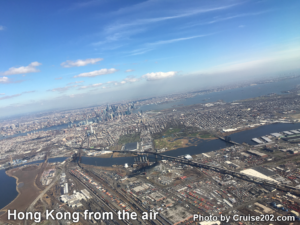 You do not need to book air when you book the cruise unless you are booking close to the sail date. There are many guidelines on when to book your air. I am constantly reading articles that say a certain time of day, day of week, or weeks prior to trip will get you the lowest fare. I have found that none of these are reliable and choose to monitor air fares on my own. This is especially easy using smart phone apps, so I can check air fares while watching TV or waiting for my dinner to arrive. I use Kayak, but many other apps have the same features. Kayak allows me to monitor a trip itinerary (or a specific flight) for fare changes by flagging the specific flight or itinerary. When rates go up or down, Kayak will notify me so I can go in and check. In the end, I continue to check on my own. If I plan to consider frequent flyer miles, I will also go into the airline sites at random times to see whether they have any deals. Generally, if I am going to use frequent flyer miles, I will book them when the miles are reasonable. Airlines do not generally run sales on miles although they will change the miles required for specific flights based on predicted availability, so it is pretty safe to book when you see a flight you like.
You do not need to book air when you book the cruise unless you are booking close to the sail date. There are many guidelines on when to book your air. I am constantly reading articles that say a certain time of day, day of week, or weeks prior to trip will get you the lowest fare. I have found that none of these are reliable and choose to monitor air fares on my own. This is especially easy using smart phone apps, so I can check air fares while watching TV or waiting for my dinner to arrive. I use Kayak, but many other apps have the same features. Kayak allows me to monitor a trip itinerary (or a specific flight) for fare changes by flagging the specific flight or itinerary. When rates go up or down, Kayak will notify me so I can go in and check. In the end, I continue to check on my own. If I plan to consider frequent flyer miles, I will also go into the airline sites at random times to see whether they have any deals. Generally, if I am going to use frequent flyer miles, I will book them when the miles are reasonable. Airlines do not generally run sales on miles although they will change the miles required for specific flights based on predicted availability, so it is pretty safe to book when you see a flight you like.
Some specific tips include:
- Pick an app, become familiar with it, and set notifications. This will provide a broad perspective on what is happening in the market. You can see what times are least costly, which airlines service the route, and what layovers are required. For example, it may be better to fly to Australia via Europe versus the West Coast. Or flying to Newark for a direct flight to your destination might be less of a hassle than changing flights in a foreign country.
- Check specific airline sites for pricing and frequent flyer deals. Many of the apps do not show all the flights. For example, I found a non-stop from New York to Hong Kong that did not appear on any of the aggregator sites and was priced much lower that the other sites.
- Check cruise line prices as they can change. I find this to be easier with cruise lines that provide a consumer site, but will call lines, such as Cunard, which do not provide an easy-to-use site. Generally, the cruise lines will be comparable to fares I can.
- Consider wholesale clubs like Costco or BJs. If you belong to a wholesale club that offers travel, do contact them. But be wary of any conditions. I have spoken to fellow passengers who have stated they got a great deal through Costco, so consider this as an alternative, once you have done your research regarding itinerary.
- What itineraries are available? Where do you clear customs? In particular, I like to have my home airport be the port of entry into the United States when arriving. That way, I don’t need to pick up the luggage twice, once at the Customs port of entry and another at my final destination. I also try to avoid some airports, such as Frankfurt, which require a lot of walking. Airport maps are available from many of the airline apps or special apps — simply search on “aiport maps” from your app store. Airports like LAX may require you to actually change terminals, which can take longer than anticipated. Many European airport have remodeled to force transferring passengers to walk a long route through stores in an effort to encourage shopping. My rule of thumb is to have 90 minutes to transfer, if possible.
- Be creative. Consider alternatives. We recently booked our air to Hawaii in two segments. We flew to and from San Francisco using frequent flyer miles, then used the free air from the cruise line from Oakland to and from Hawaii. When we checked what the cruise line was charging to fly from our local airport, I found that we could have booked our own fare for the same price. In the end, the air was close to free and the flights were great.
Do not be fooled by bargains you might see in emails or on discount sites. Many look good, but read the fine print.
The bottom line is monitor prices frequently using an app, airline sites, and the cruise site. When you see a price for an itinerary you like at a good price, take action to pursue it.
Summary
If you don’t want to spend time booking your own air, by all means use the air booking services provided by the cruise line. I have found that these are seldom more expensive than booking through the airlines or other sites and they provide the additional assurances of support for flight delay or other emergencies, and many cruise lines will not charge you until final payment. Some cruise lines have excellent web sites so you can pick your flights online, others require you to deal directly with them. Your cruise agent can assist you in selecting your air. My general rule of thumb is not to book more than nine (9) months prior to a trip, as many airlines do not release their fare until then.
I find that, by performing my research and considering alternatives, I can generally find good deals. Even when booking through the cruise line, it is important to know your options so you can ask the right questions. I have booked about half my trips through the cruise lines, but only after doing my research. On others, I have found upgrade deals, used frequent flyer miles, or just stumbled on a good fare/itinerary. In some cases, I spend a couple of days on my way to the final destination, such as visiting my son in San Francisco, which requires some special planning.
By doing your research and knowing your alternative, you can often save enough money on air to pay for a day or two at your destination.
In future posts, I will discuss additional tips for managing your flights to and from the cruise.. Please respond to our poll and provide any suggestions, ask questions, or simply comment — we want your feedback.

